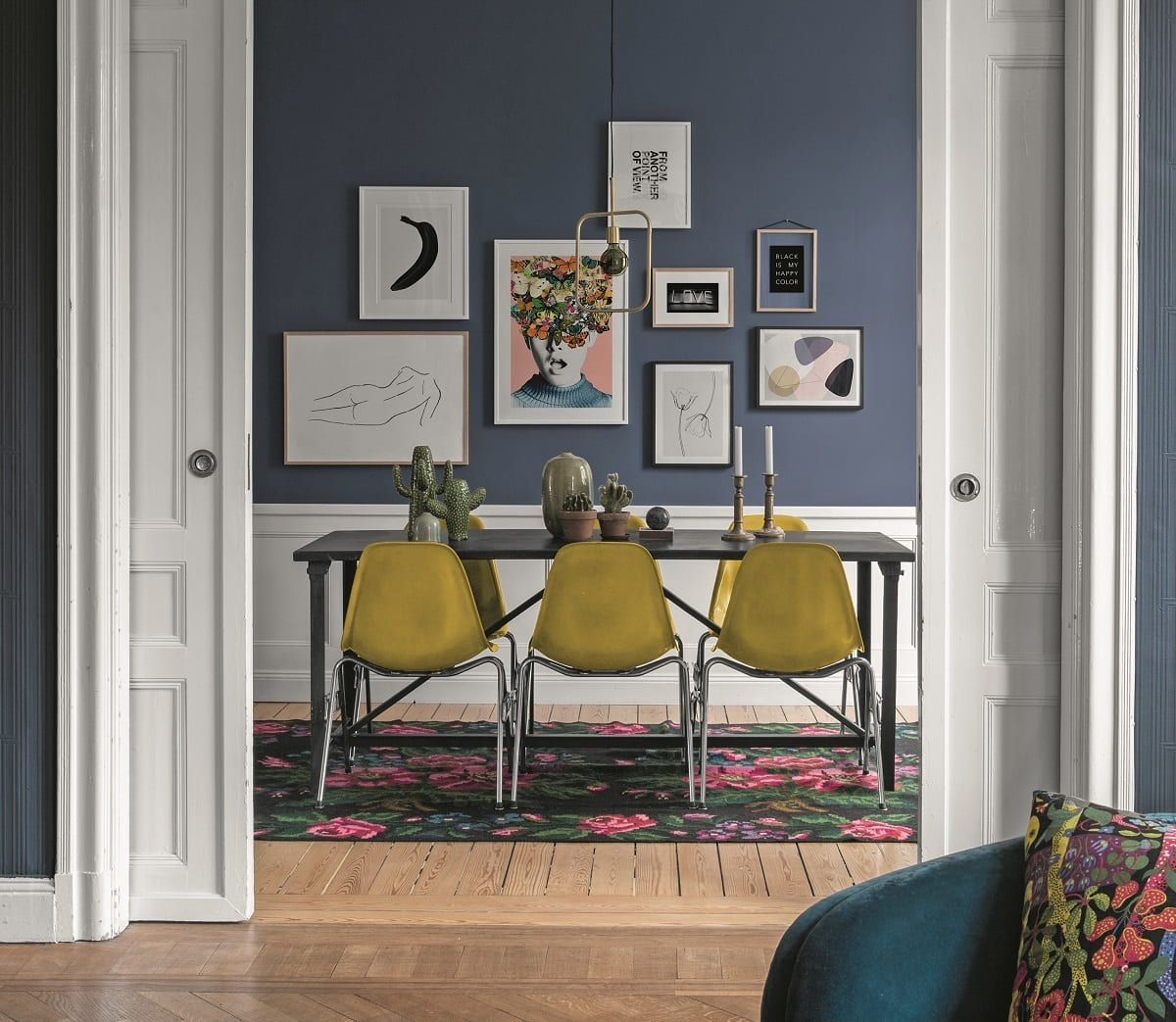

Articles
How To Store Artwork
Modified: October 20, 2024
Learn the best methods for storing art pieces and preserving your articles. Protect your valuable collection with proper storage techniques.
(Many of the links in this article redirect to a specific reviewed product. Your purchase of these products through affiliate links helps to generate commission for Storables.com, at no extra cost. Learn more)
Introduction
Welcome to the world of art! Whether you’re an artist, collector, or enthusiast, one thing is certain: art is near and dear to your heart. As a cherished possession, it’s important to ensure your artwork is properly stored and preserved to maintain its beauty and value for years to come.
In this article, we will explore the essential steps and strategies for storing artwork. From choosing the right storage location to handling and transporting your pieces, we’ll cover everything you need to know to protect your artwork from potential damage.
Proper storage and care can significantly prolong the lifespan of your art, preventing deterioration and preserving its original quality. With the right techniques in place, you can enjoy and share your artwork while safeguarding its long-term integrity.
So, let’s dive into the world of art storage and ensure your precious pieces are stored safely and securely!
Key Takeaways:
- Preserve your artwork’s beauty and value by choosing a proper storage location, framing and mounting with care, and controlling temperature, humidity, and light exposure. Proper handling, transportation, and preventive measures against pests and mold are also crucial for long-term preservation.
- Safeguard your artwork’s financial and historical significance by obtaining the right insurance coverage, maintaining accurate documentation, and regularly reassessing its value. Implement proper cleaning and maintenance techniques to ensure your collection remains visually stunning and well-preserved.
Read more: How To Store Kids’ Artwork Digitally
Choosing a Proper Storage Location
When it comes to storing artwork, the location plays a crucial role in ensuring its preservation. Here are some key factors to consider when selecting a storage space:
- Temperature and Humidity: Artwork is sensitive to temperature and humidity fluctuations. Ideally, the storage area should maintain a consistent temperature between 68-75 degrees Fahrenheit (20-24 degrees Celsius) and a relative humidity level between 45-55%. Avoid areas prone to extreme temperature changes, such as attics or basements.
- Lighting: Exposure to direct sunlight or bright artificial light can cause fading and damage to artwork. Choose a storage space away from windows or install UV-blocking film or curtains to protect against harmful rays. Consider using low-wattage indirect lighting to illuminate the area when necessary.
- Ventilation: Good air circulation is essential to prevent the buildup of mold and mildew. Ensure there is proper ventilation in the storage area to maintain a fresh and dry environment.
- Security: Artwork may have significant financial and sentimental value, so security is paramount. Look for a storage space equipped with surveillance cameras, security alarms, and controlled access.
- Environmental Factors: Keep artwork away from areas prone to leaks, floods, or high humidity, such as pipes or air conditioning units. It’s also important to consider the proximity to pollutants and chemicals, which can have a detrimental effect on the artwork.
- Size and Accessibility: Ensure that the storage area is spacious enough to accommodate your artwork comfortably. Consider the size and dimensions of your pieces when selecting the storage unit to avoid any potential damage. Additionally, easy accessibility will make it convenient to retrieve or organize your artwork when needed.
By carefully considering these factors, you can choose a storage location that provides optimal conditions for preserving the quality and longevity of your artwork.
Framing and Mounting Artwork
Proper framing and mounting are essential steps in preserving and displaying artwork. When done correctly, framing not only enhances the aesthetic appeal of the artwork but also provides crucial protection from potential damage. Here are some key considerations:
- Use Acid-free Materials: When framing artwork, make sure to use acid-free matting, backing boards, and archival tapes. Acidic materials can deteriorate the artwork over time and cause discoloration or staining. Opt for acid-free materials that are specifically designed for preserving artwork.
- Choose UV-Protected Glass or Plexiglass: To protect your artwork from harmful UV rays and light damage, use glass or plexiglass that offers UV protection. This will help prevent fading, discoloration, and other degradation caused by exposure to sunlight or artificial light sources.
- Ensure Proper Mounting: Use appropriate mounting techniques to securely attach the artwork to the frame, ensuring it remains flat and centered. Avoid using adhesive materials directly on the artwork, as they can cause irreversible damage. Instead, consider using archival photo corners or other non-invasive mounting techniques.
- Matting: Matting not only adds a decorative element to the artwork but also creates a space between the glass and the artwork’s surface. This separation allows for air circulation and helps prevent moisture buildup that could lead to mold or foxing.
- Frame Selection: Choose a frame style and material that complements the artwork while providing adequate support and protection. Consult with a professional framer if you’re unsure about the best frame options for your specific artwork.
- Hang Artwork Properly: When hanging framed artwork, make sure to use appropriate hanging hardware suitable for the weight and size of the piece. Distribute the weight evenly to prevent excessive stress on specific areas of the frame. An evenly balanced frame is less likely to tilt or fall, reducing the risk of damage.
Proper framing and mounting techniques not only protect your artwork from physical damage, but they also enhance its appearance and showcase it in the best possible way. Investing in quality materials and professional framing services can ensure the long-term preservation and visual appeal of your artwork.
Handling and Transporting Artwork
Proper handling and transportation of artwork are critical to avoid accidental damage. Whether you’re moving your art within your home or shipping it to a different location, here are some essential guidelines to follow:
- Use Clean Hands or Gloves: Before touching artwork, make sure your hands are clean and free from oils, lotions, or any substances that could transfer onto the artwork’s surface. Alternatively, wear clean, white cotton gloves to minimize the risk of smudges, fingerprints, or other damage.
- Support the Artwork: Always support the artwork from both sides, especially larger pieces or delicate mediums like canvas. Use your hands to cradle and support the artwork, avoiding any unnecessary pressure on vulnerable areas.
- Use Protective Packaging: When transporting artwork, wrap it in acid-free tissue paper or glassine to protect it from scratches and dust. For added protection, place the artwork between sturdy foam or cardboard sheets and secure it with packing tape or bands.
- Insulate Fragile Artwork: If you have delicate or fragile artwork, such as sculptures or ceramics, consider using bubble wrap or foam padding to provide cushioning and shock absorption during transit. Be sure to secure the wrapping materials tightly to prevent movement.
- Label and Document: Properly label each piece of artwork with its title, artist’s name, and any necessary handling instructions. Additionally, create a detailed inventory list with corresponding photographs or descriptions of the artwork. This documentation will be invaluable for insurance purposes and in case of any loss or damage.
- Choose Professional Art Transport Services: For valuable or delicate artwork, consider utilizing professional art transport services. They have the expertise, experience, and specialized equipment to handle and transport artwork safely and securely.
- Secure Artwork in Vehicles: If you’re transporting artwork in your own vehicle, ensure it is securely strapped or positioned to prevent movement. Place it in an area where it won’t be exposed to extreme temperatures, direct sunlight, or any potential hazards.
- Inspect Upon Arrival: Once your artwork reaches its destination, carefully inspect it for any signs of damage. If you notice any issues, document them immediately and contact the appropriate parties, such as the shipping company or insurance provider, if necessary.
By following these guidelines, you can minimize the risk of damage and ensure that your artwork arrives at its destination safe and sound. Whether you’re moving your artwork across the room or across the world, proper handling and transportation practices are vital for preserving its beauty and value.
Temperature and Humidity Control
Maintaining proper temperature and humidity levels is crucial for the long-term preservation of artwork. Fluctuations in temperature and humidity can cause irreversible damage to delicate materials and accelerate deterioration. Here’s what you need to know:
Temperature:
Artwork should ideally be stored in an environment with a consistent temperature between 68-75 degrees Fahrenheit (20-24 degrees Celsius). Extreme temperature changes can cause expansion and contraction of materials, leading to warping, cracking, and other structural damage. Avoid storing artwork in areas prone to temperature fluctuations, such as attics, basements, or rooms with direct exposure to sunlight.
Humidity:
Relative humidity (RH) refers to the amount of moisture present in the air. Artwork should be stored in an environment with a relative humidity level between 45-55%. High humidity can lead to mold growth, foxing, and paper deterioration, while low humidity can cause the drying out and cracking of certain materials. Maintaining a consistent humidity level prevents these issues and helps preserve the stability and integrity of the artwork.
Controlling Temperature and Humidity:
Here are some strategies to control temperature and humidity in your art storage area:
- Dehumidifiers and Humidifiers: Depending on your geographical location and climate, you may need to use dehumidifiers or humidifiers to regulate the moisture levels in the air. These devices can help maintain the desired relative humidity range, preventing damage to your artwork.
- Insulation and Sealing: Insulate your art storage area to minimize the impact of external temperature fluctuations. Properly seal doors, windows, and any cracks or gaps that may allow air exchange, which can affect temperature and humidity levels.
- Air Conditioning and Heating: Consider utilizing air conditioning or heating systems to help maintain a consistent temperature within the desired range. Regularly monitor and regulate the temperature settings to ensure they align with the recommended guidelines.
- Keep Artwork off Exterior Walls: If possible, avoid storing artwork directly against exterior walls, as these areas are more susceptible to temperature variations. Instead, leave a small gap between the artwork and the wall to allow for air circulation.
- Monitor and Maintain: Regularly monitor the temperature and humidity levels in your storage area using a hygrometer and thermometer. Make any necessary adjustments to maintain the desired conditions for optimal preservation.
By controlling temperature and humidity, you can prevent damage caused by environmental factors, ensuring the longevity and stability of your artwork. Consistency is key, so make a habit of regularly monitoring and maintaining the ideal conditions to protect your valuable collection.
When storing artwork, use acid-free materials to protect against deterioration. Keep pieces flat or upright, and avoid direct sunlight and extreme temperatures.
Read more: How To Store Paper Artwork
Protecting Artwork from Light Damage
Exposure to light, especially ultraviolet (UV) light, can cause irreversible damage to artwork over time. Fading, discoloration, and deterioration of materials are common consequences of light damage. To preserve your artwork’s vibrant colors and delicate surfaces, it’s important to take measures to protect it from harmful light. Here’s what you need to know:
UV Protection:
One of the most effective ways to safeguard artwork from light damage is by using UV-protective materials. UV-filtering glass or plexiglass can be used for framing artworks, blocking harmful UV rays from reaching the surface. These protective materials minimize fading and discoloration caused by exposure to sunlight and artificial light sources.
Display Considerations:
When choosing where to display your artwork, consider the following factors:
- Avoid Direct Sunlight: Direct sunlight is the most damaging light source for artwork. Avoid placing your artwork in areas where it will be exposed to direct sunlight for extended periods. If possible, position the artwork away from windows or use curtains, blinds, or UV-filtering films to shield it from direct sunlight.
- Control Ambient Light: While sunlight is the primary concern, other light sources can also contribute to light damage. Control ambient light by using dimmer switches, adjusting overhead lighting, or using low-wattage bulbs to minimize exposure.
- Rotate Artwork: If you have a large collection of artwork, consider rotating the pieces on display periodically. This allows for equal exposure to light and prevents excessive fading or discoloration of specific works.
- Use Display Cases: For highly light-sensitive or valuable artwork, consider using display cases equipped with UV-filtering glass or plexiglass. Display cases provide an extra layer of protection, shielding the artwork from ambient light while still allowing it to be viewed.
Lighting for Viewing:
While protecting artwork from light damage is important, it is equally important to ensure proper lighting for viewing. Consider the following tips:
- Use Conservation Lighting: Specialized conservation lights, such as LED bulbs, are designed to emit minimal UV radiation and infrared (IR) heat. These lights provide proper illumination without causing damage to sensitive materials.
- Position Lighting Carefully: Position lights at an angle to prevent direct light from falling directly on the artwork’s surface. Use track lighting or adjustable fixtures to ensure controlled and targeted illumination.
- Consult Lighting Experts: If you are uncertain about the best lighting options for your artwork, consult a professional lighting expert or an art conservator. They can provide guidance and recommend suitable lighting solutions for your specific collection.
By taking precautions to protect artwork from light damage, you can ensure its longevity and preserve its original beauty. Be mindful of the light sources in your display areas, utilize UV-protective materials, and provide appropriate lighting for viewing to maintain your artwork’s vibrancy for years to come.
Preventing Damage from Pests and Mold
Pests and mold can pose significant threats to the preservation of artwork. The presence of insects, rodents, and mold can result in irreversible damage, such as staining, deterioration, and structural instability. To protect your artwork from these potential hazards, it’s essential to take preventive measures. Here’s what you need to know:
Pest Control:
Implementing pest control measures can help prevent insects and rodents from causing damage to your artwork. Consider the following steps:
- Maintain Cleanliness: Keep the storage area clean and free from debris, as pests are attracted to food sources and clutter. Regularly vacuum and sweep the area, paying attention to hidden corners and crevices.
- Seal Entry Points: Inspect the storage area for any openings that pests could use to gain access. Seal cracks, gaps, and holes using caulk or expandable foam. Install weather-stripping on doors and windows to prevent pests from entering.
- Monitor and Trap: Place insect traps and monitors in the storage area to detect and capture any pests that may be present. Regularly inspect the traps and take appropriate action if pests are detected.
- Consider Professional Services: If you have a severe pest problem or if your artwork collection is highly valuable, consider hiring professional pest control services. They have the expertise and methods to effectively eliminate pests and prevent future infestations.
Mold Prevention:
Mold thrives in environments with high humidity and poor ventilation. Here are some steps to prevent mold growth and protect your artwork:
- Control Humidity Levels: Maintain proper humidity levels in the storage area by using dehumidifiers or humidifiers. Aim for a relative humidity range of 45-55% to discourage mold growth.
- Ensure Proper Ventilation: Good air circulation is essential to prevent mold. Keep the storage area well-ventilated by opening windows when possible or using fans to promote airflow.
- Inspect for Water Leaks: Regularly inspect the storage area for any signs of water leaks or moisture intrusion. Repair any leaks promptly and address the source of the moisture to prevent mold growth.
- Use Moisture-Absorbing Materials: Place moisture-absorbing materials, such as silica gel packets or dehumidifier tubs, in the storage area to reduce excess humidity and prevent mold growth.
- Keep Artwork off the Floor: Avoid placing artwork directly on the floor, as it can be more susceptible to moisture and mold. Use shelving or storage racks to elevate the artwork and protect it from potential water damage.
By implementing these preventive measures, you can significantly reduce the risk of pests and mold damage to your valuable artwork. Regular monitoring, maintenance, and a clean storage environment are key to preserving the integrity and longevity of your collection.
Proper Cleaning and Maintenance Techniques
Regular cleaning and maintenance are essential for preserving the beauty and longevity of your artwork. However, it’s crucial to exercise caution and follow proper techniques to avoid causing any damage. Here are some guidelines to help you maintain your artwork effectively:
- Dust Regularly: Dust is a common culprit for accumulating on the surface of artwork. Use a soft, clean brush or a microfiber cloth to gently remove dust particles. Start from the top and work your way down to prevent dust from falling onto already cleaned areas. Avoid using feather dusters or abrasive materials that can scratch or damage delicate surfaces.
- Avoid Harsh Cleaning Agents: When cleaning artwork, never use harsh chemicals or cleaning agents unless recommended by a professional conservator. These substances can react with the materials and cause irreversible damage. Stick to mild cleaning solutions specifically formulated for artwork or consult with a professional if you’re unsure.
- Test Cleaning Methods: Before applying any cleaning solution or technique to the artwork, perform a test on a small, inconspicuous area. This will help ensure that the cleaning method doesn’t cause any adverse effects or damage to the artwork.
- Handle Artwork with Clean Hands or Gloves: When touching the artwork, make sure your hands are clean and free from oils, lotions, or any substances that could transfer onto the artwork’s surface. Alternatively, wear clean, white cotton gloves to minimize the risk of smudges, fingerprints, or other damage.
- Be Gentle: When cleaning delicate surfaces or materials, apply light pressure and use gentle, circular motions. Avoid scrubbing or excessive rubbing, as it can cause abrasions or remove paint layers.
- Consult a Professional for Specialty Cleaning: If you have valuable or delicate artwork that requires specialized cleaning techniques, it’s best to consult a professional art conservator. They have the expertise and knowledge to safely clean and maintain fragile or valuable pieces.
- Inspect and Address Any Issues: Regularly inspect your artwork for any signs of damage or deterioration. Look for changes in color, stability, or any visible issues such as mold, insect activity, or warping. If you notice any problems, consult a professional conservator for proper assessment and restoration.
- Store Artwork Properly: Proper storage plays a significant role in maintaining the condition of artwork. Follow the guidelines for choosing a proper storage location, framing, and handling techniques mentioned earlier in this article.
By following these proper cleaning and maintenance techniques, you can keep your artwork looking its best while ensuring its long-term preservation. Regular care and attention will help you enjoy your collection for years to come.
Insurance and Documentation
Protecting your artwork goes beyond physical preservation—it also involves safeguarding its value through insurance and proper documentation. Accidents, theft, and natural disasters can occur, and having adequate insurance coverage and accurate documentation is essential. Here’s what you need to know:
Insurance Coverage:
Artwork insurance provides financial protection in the event of damage, loss, or theft. Here are the key steps to ensure you have the right insurance coverage:
- Evaluate the Value: Determine the value of your artwork by consulting experts, appraisers, or art dealers. Assess the current market value and keep in mind any appreciation or changes in value over time.
- Choose the Right Policy: Work with a reputable insurance provider or a specialized fine art insurance company to obtain a policy tailored to your specific needs. Make sure the policy covers various scenarios, including accidental damage, theft, and natural disasters.
- Document Your Collection: Keep a detailed inventory of your artwork, including photographs, descriptions, provenance, and any relevant certificates of authenticity. This documentation will serve as evidence of ownership and aid in the claims process.
- Regularly Reassess Coverage: Artwork values can fluctuate over time, so it’s important to reassess your insurance coverage periodically. Notify your insurance provider of any significant changes in your collection’s value to ensure adequate coverage.
- Understand Policy Exclusions and Limitations: Review your insurance policy carefully to understand any exclusions or limitations that may affect your coverage. Some policies may have special requirements for storage, transportation, and security measures.
Documentation:
Accurate and updated documentation is essential for managing and protecting your artwork. Here are some key points to consider:
- Keep Detailed Records: Maintain a thorough record of each artwork piece, including the artist’s name, title, medium, dimensions, acquisition date, and purchase price. Additionally, include any relevant certificates of authenticity, appraisals, receipts, and provenance information.
- Photograph Your Artwork: Take high-quality photographs of each artwork piece from multiple angles. These images can serve as documentation for insurance claims, cataloging, and online sharing.
- Store Documentation Securely: Keep physical copies of your documentation in a safe and secure location, such as a fireproof safe or a safety deposit box. Additionally, consider digitizing your documentation and storing it in encrypted cloud storage.
- Update Your Records: Regularly review and update your artwork records as needed. This includes documenting any changes in ownership, appraisals, restoration work, or other significant events that impact the value or history of the artwork.
- Share Documentation with Trusted Professionals: Inform your insurance provider, art appraisers, and any other relevant professionals about the documentation and records you have for your artwork. This ensures they can better assist you in managing, valuing, and protecting your collection.
By having appropriate insurance coverage and accurate documentation, you can protect the monetary value and historical significance of your artwork. In the event of an unforeseen incident, these measures can provide peace of mind and facilitate a smoother claims process.
Read more: How To Store Artwork At Home
Conclusion
Properly storing and preserving artwork is vital for maintaining its beauty, value, and integrity. By following the strategies and techniques outlined in this article, you can ensure that your artwork remains protected and well-maintained. Here’s a recap of the key points discussed:
Choosing a proper storage location involves considering factors such as temperature, humidity, lighting, security, and size. Create an environment that provides stable conditions and protects artwork from environmental hazards.
Framing and mounting artwork should be done using acid-free materials, UV-protected glass or plexiglass, proper mounting techniques, and suitable frames that complement the artwork.
Handling and transporting artwork requires clean hands or gloves, proper support, protective packaging, labeling, and securing artwork during transit. Professional transport services may be necessary for valuable or delicate pieces.
Controlling temperature and humidity is crucial for preventing damage. Use dehumidifiers or humidifiers, insulate and seal the storage area, monitor and maintain ideal conditions.
Protecting artwork from light damage includes using UV-protective materials, avoiding direct sunlight, controlling ambient light, and using conservation lighting techniques for proper viewing.
Preventing damage from pests and mold involves maintaining cleanliness, sealing entry points, monitoring and trapping pests, controlling humidity levels, ensuring proper ventilation, and regularly inspecting for water leaks.
Proper cleaning and maintenance techniques include regular dusting with appropriate tools, gentle cleaning methods, handling artwork with clean hands or gloves, consulting professionals for specialty cleaning, and storing artwork properly.
Insurance and documentation are essential for protecting artwork’s value. Evaluate the value, choose the right insurance policy, keep detailed records, regularly reassess coverage, and maintain accurate and updated documentation.
By implementing these strategies, you can ensure that your artwork not only remains visually stunning but also retains its financial and historical significance. Remember to regularly monitor and maintain your collection, seek professional assistance when needed, and keep up-to-date with best practices in art preservation. With proper care and attention, your artwork will bring joy and inspiration for years to come.
Frequently Asked Questions about How To Store Artwork
Was this page helpful?
At Storables.com, we guarantee accurate and reliable information. Our content, validated by Expert Board Contributors, is crafted following stringent Editorial Policies. We're committed to providing you with well-researched, expert-backed insights for all your informational needs.














0 thoughts on “How To Store Artwork”